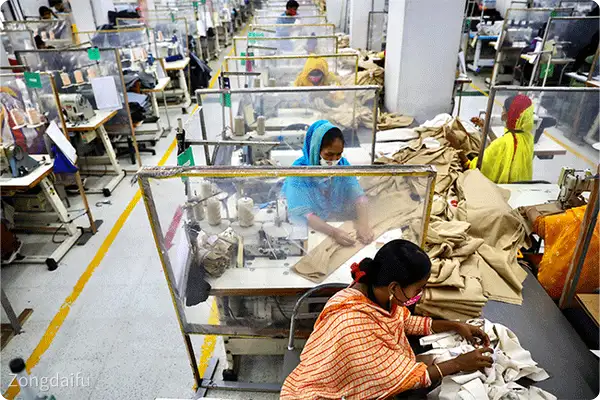Since the end of October, Bangladesh’s capital Dhaka and core industrial districts have continued to erupt in textile workers’ demonstrations demanding massive wage increases, sparking in-depth discussions about the global garment industry’s highly dependent on low-cost labor. In Bangladesh, about 3,500 garment factories employ 4 million workers, who frequently overtime to meet the needs of world-renowned brands, but only receive a minimum monthly salary of 8,300 takas (approximately $75).
Faced with an inflation rate of about 10 percent last year, textile workers in Bangladesh have demanded a minimum wage rise to 20390 takas, which is almost three times the increase. However, business owners have only proposed a 25% wage increase, or 10400 takas, making the situation even more tense. Due to the demonstrations, about 300 factories in Dhaka and the Textile Industry Center in Gaziantep have closed.

Faruque Hassan, chairman of the Bangladesh Clothing Manufacturers and Exporters Association (BGMEA), noted that supporting workers’ wage increases meant that Western clothing brands needed to raise order prices. Hassan wrote to the American Clothing Shoe Association, hoping to persuade big brands to raise order prices to support the wage transition. The coordination meeting of Bangladesh’s minimum wage committee is ongoing, and the government believes that entrepreneur’s bid “does not work,” while factory owners warned that Bangladesh could lose a competitive advantage if the workers’ demands were met.
These developments highlight the problem of the fast fashion business model, which is based on the competition for low-income workers in Asia to provide low-cost goods. Bangladesh, as one of the worlds major textile exporters, has extremely low wages and is currently facing a comprehensive outbreak of systematic contradictions.
In response to the demands of Bangladesh textile workers, H&M expressed its support for the new minimum wage standards and allowed processing plants to raise prices in supply chain procurement practices to reflect wage increases. According to data provided by H&M, its average monthly wage for Bangladesh workers in the supply chain was $134, higher than the minimum wage standard. However, the average monthly income for Cambodian workers was still significantly lower compared to $293. Similarly, H&M paid Indian workers a 10% higher wage than Bangladesh workers, although it purchased more clothing from Bangladesh than India and Cambodia.
Puma mentioned in its annual report that wages paid to workers in Bangladesh were much higher than the minimum benchmark, but only 70% of the “l(fā)ocal living wage benchmark” while the income earned by workers working in Cambodia and Vietnam reached the local living wage benchmark.
Bangladesh’s clothing industry has experienced negative developments, such as the collapse of the Sava District building in 2013 that killed 1,134 people.The event prompted international brands to seek low prices while also focusing on improving local working conditions.
The demonstration and subsequent discussions once again brought the global clothing industry’s production patterns and its reliance on cheap labor force into the public eye. Bangladesh’s textile workers, as part of the global clothing supply chain, have attracted widespread attention from the international community to their wages and welfare issues. With the disclosure of more data and the public response of major brands, global consumer awareness of the ethical and fair trade behind the production of clothing products is increasing.


 Follow customer service WeChat
Follow customer service WeChat